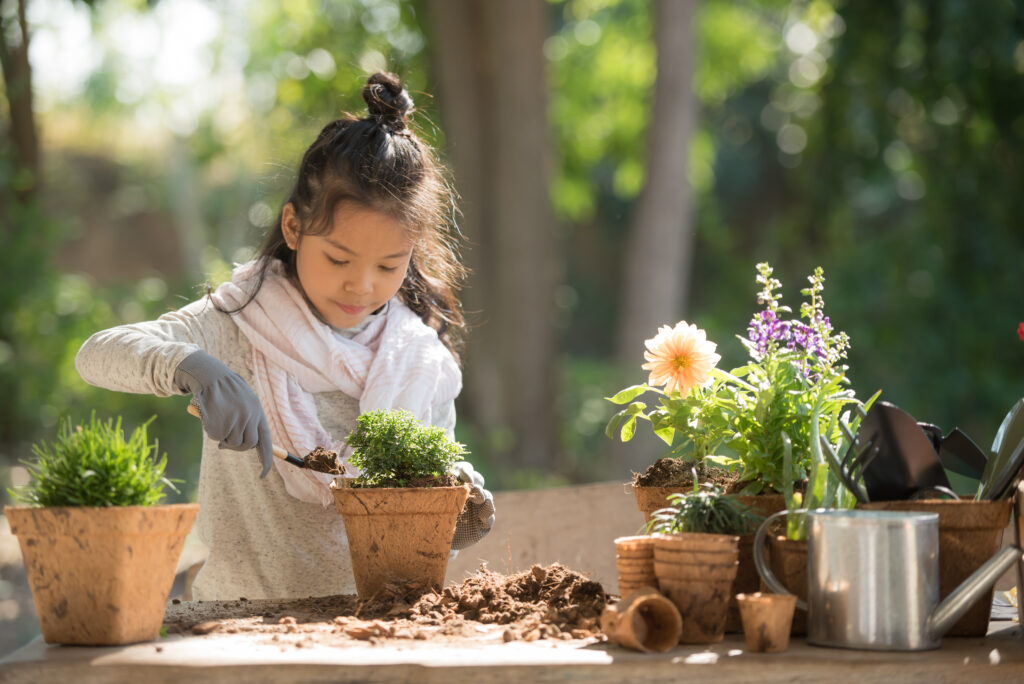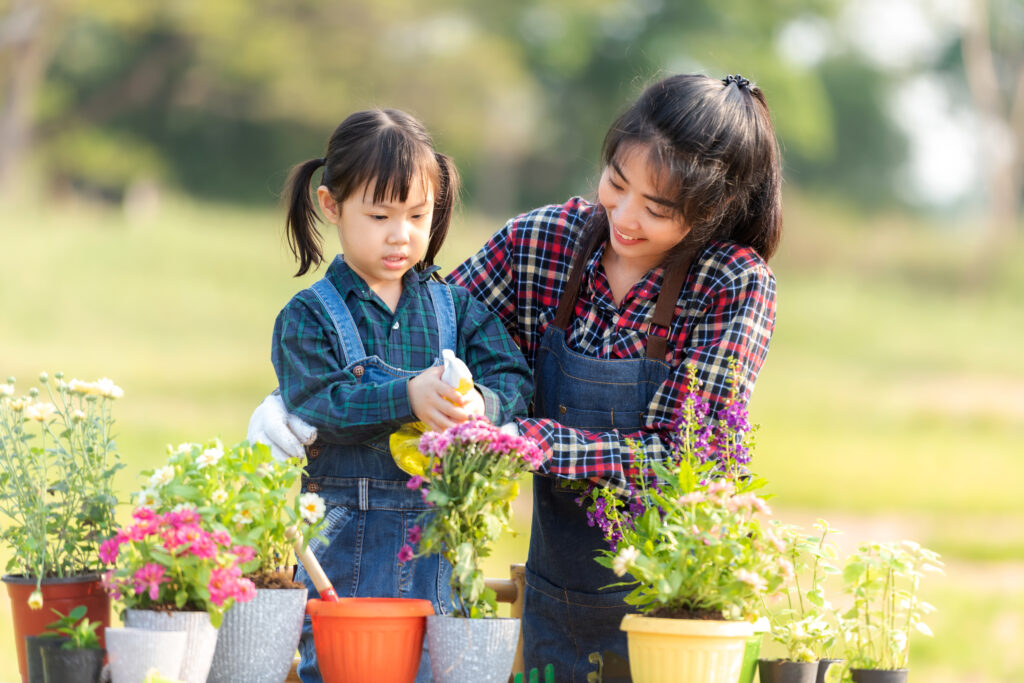In a world that is primarily driven by screens and digital distractions, the value of introducing children to the wonders of the natural world cannot be overstated. Teaching kids about plants and gardening not only cultivates a deeper understanding of the environment but also fosters a sense of responsibility and love for nature from an early age. One creative and interactive way to do this is through educational plant labels. These small markers in your indoor garden can serve as powerful tools for teaching children about plant anatomy, growth stages, and the importance of nurturing living things. Children are always curious and thrive when they can have Hands-On learning experiences. Interacting with plants can capture their attention and spark a genuine interest in gardening, and it’s good to start them young. When it comes to traditional classrooms like school, it’s known that Hands-On learning allows kids to actively explore and discover, while enhancing their comprehension and retention of information. What better way to do this than for them to learn about different plant types and species.

The Educational Potential of Plant Labels
Plant labels are often viewed as tools for identifying plant species. However, they have become so much more, a gateway to a world of botanical knowledge. By incorporating educational content into these labels, anyone can transform their indoor garden into an Interactive Learning space that nurtures young minds.
Plant anatomy might sound pretty complex, but with the help of any label, you’ll be on your way of knowing exactly what you’re looking at each time. You can attach labels that explain any part of a plant, including roots, stems, leaves, flowers, and even more. Make sure to include child friendly illustrations too to help them visualize the plant even further. I added labels to my plants a few years ago, and my 5 year old son started naturally absorbing the information and understanding exactly how these plants function and contribute to their ecosystems. Pretty cool, right?
Exploring Growth Stages
One of the most magical parts of plants and gardening is the plant’s growth journey. These plant tags and labels can document and explain each growth stage, from germination and seedling development to flowering and fruiting. As your kiddos witness these transformations, they’ll gain invaluable insight into the natural processes that sustain life in our world. This experience develops patience and an appreciation for the balance of nature! When it comes to taking care of your plants, it goes Way Beyond just watering them each day, it teaches children about responsibility and the importance of nurturing living things. The plant labels that we sell include care instructions, that can remind any adult or child of the vital role they play in ensuring their plants thrive.
Plant anatomy might sound pretty complex, but with the help of any label, you’ll be on your way of knowing exactly what you’re looking at each time. You can attach labels that explain any part of a plant, including roots, stems, leaves, flowers, and even more. Make sure to include child friendly illustrations too to help them visualize the plant even further. I added labels to my plants a few years ago, and my 5 year old son started naturally absorbing the information and understanding exactly how these plants function and contribute to their ecosystems. Pretty cool, right?

Creating DIY Labels
To get your child actively involved in their Learning Journey about plants, invite them to create their own plant labels! You can simply provide craft supplies like markers, colored paper, and popsicle sticks and let their imagination run wild. Allowing your child to personalize their labels not only adds a creative touch, but also makes the learning experience a little bit more memorable. This DIY aspect encourages a sense of ownership and pride in their indoor garden.
I saw an article the other day that said that early exposure to the natural world can have a profound impact on any child’s life. Plants can help nurture a deep connection to Nature that can last a lifetime. When you sit down and teach your kid about plants and their role in the ecosystem, they feel a sense of empowerment and that they might be able to change what bad things happen for a sustainable future.
Caring for indoor plants isn’t just about learning facts about them, it’s about acquiring life lessons and values from an early age. As children tend to their plants, they experience firsthand the concepts of patience, nurturing, and growth. They learn that just like plants, people also need care, time, and effort to flourish. These lessons extend beyond the garden, shaping their character and view of the world as they see it. I’m not saying plants are the end all, be all for shaping young ones, but it probably wouldn’t hurt to get them exposed at an early age.
Real Life Example
My friend Tom Smith, owner of the top demolition company Las Vegas has to offer, found a pretty unique way to incorporate educational plant labels into his families home to help educate his 6-year-old son. Despite his busy life with his business, Tom told me he makes as much time as possible after work to foster his son Leo’s curiosity with plants and education from a young age. By placing plant labels in their home, he has recently transformed their living room into an engaging classroom. The plant labels he has made offer details on what species the plant is and how often it needs to be watered. His son is now able to identify about 8 out of the 10 plants since they have started. It’s clear to see that this stuff works!
Conclusion
Plant labels can indeed be used for educational purposes and should be. their keys that unlock a world of knowledge in wonder for children. Through these labels and tags, kids can explore plant anatomy, witness growth stages, and also develop a keen sense of responsibility towards living things. As parents, educators, and even caregivers, we have the privilege of nurturing a love for nature in this next generation. When we harness the power of educational plant labels, we plant seeds of curiosity and environmental consciousness in these children’s lives that will bloom for years to come.